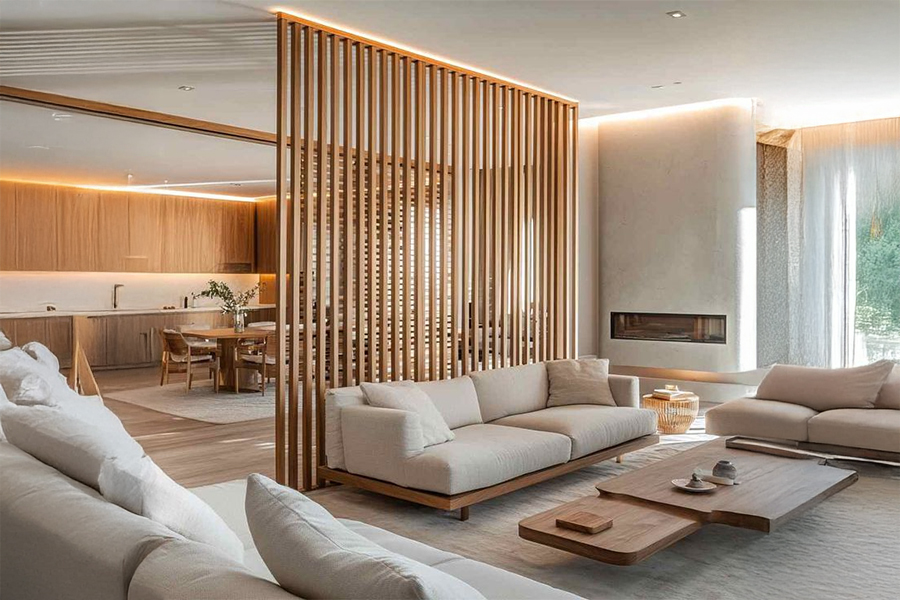In today’s interiors, function and creativity often go hand in hand. A room divider wood design is more than a functional partition; it has become a central feature of artistry and self-expression in modern living spaces. Designers and homeowners increasingly view these dividers not as simple barriers but as integral elements that enhance mood, define flow, and add visual depth.
The Evolution of Room Dividers
Wooden dividers have a long history in global design traditions. From intricately carved panels in Asian interiors to minimalist Scandinavian styles, wood has consistently offered both beauty and resilience. In modern homes, these dividers balance old-world craftsmanship with contemporary needs, standing out as decorative pieces while providing subtle spatial control. Their ability to evolve with design trends makes them timeless and adaptable.
Aesthetic Appeal as Artwork
Modern interiors often use wooden room dividers as standalone art pieces. Whether showcasing intricate hand-carved patterns, geometric motifs, or smooth natural finishes, they draw the eye as focal points. The grain, tone, and texture of wood add warmth to otherwise neutral or industrial spaces. This blend of natural material and artistic detail allows dividers to function like sculptures within a room, changing how people perceive the environment.
Creating Flow and Privacy
While their visual appeal is undeniable, room dividers also serve practical purposes. In open-plan layouts, they create defined zones without constructing permanent walls. A wood divider can offer privacy for workspaces, reading corners, or dining areas while maintaining an airy, connected feel. This flexibility is particularly important in smaller urban apartments, where multifunctional areas are necessary for modern lifestyles.
Symbolism in Design
Wood carries cultural and symbolic significance that enhances the artistic weight of dividers. Lighter woods often evoke feelings of calm and simplicity, while darker shades suggest richness and tradition. The patterns carved or etched into panels may symbolise heritage, spirituality, or personal expression. By choosing a particular design, homeowners can reflect values and stories that resonate within their daily spaces.
Sustainability and Natural Connection
As sustainability becomes central to design, wooden dividers reinforce the human connection to nature. Responsibly sourced timber and recycled wood offer environmentally conscious choices that maintain both strength and charm. Their natural presence softens interiors, countering the dominance of glass, steel, and concrete in modern architecture. This ecological awareness makes them a preferred option for design that is as ethical as it is artistic.
Versatility in Styles
One of the most compelling features of wooden room dividers is their versatility. Minimalist slatted screens complement contemporary décor, while hand-painted panels bring colour and personality. Folding dividers can be rearranged to adapt to changing needs, whereas fixed installations serve as permanent architectural features. This adaptability allows them to remain relevant across evolving design trends, from industrial lofts to bohemian retreats.
Lighting and Ambience
Wooden dividers interact beautifully with light. Slatted or perforated designs filter daylight, creating dynamic shadow play across walls and floors. At night, backlighting can transform them into glowing features, enhancing mood and atmosphere. This interplay of light and material ensures that wooden dividers serve not only as practical solutions but also as theatrical design elements.
A Statement of Modern Living
In contemporary design, personalisation is paramount. A wooden divider is no longer just about separation; it is about identity, lifestyle, and creative storytelling. Whether bold and commanding or subtle and understated, each divider is a reflection of its owner’s aesthetic values. In this sense, they stand as symbols of the modern balance between functionality and art.
Conclusion
Wooden room dividers demonstrate how design can transcend basic utility to become meaningful art. They shape interiors by adding warmth, privacy, and visual drama, while symbolising cultural values and sustainable practices. In modern homes, these pieces stand proudly as artistic statements, merging timeless craftsmanship with contemporary expression. Their role goes far beyond dividing space—they connect people to tradition, nature, and creativity in everyday living.

